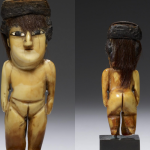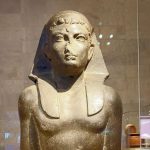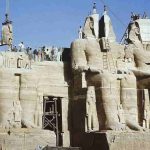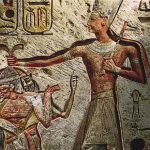Pair statue of Ptahkhenuwy and his wife
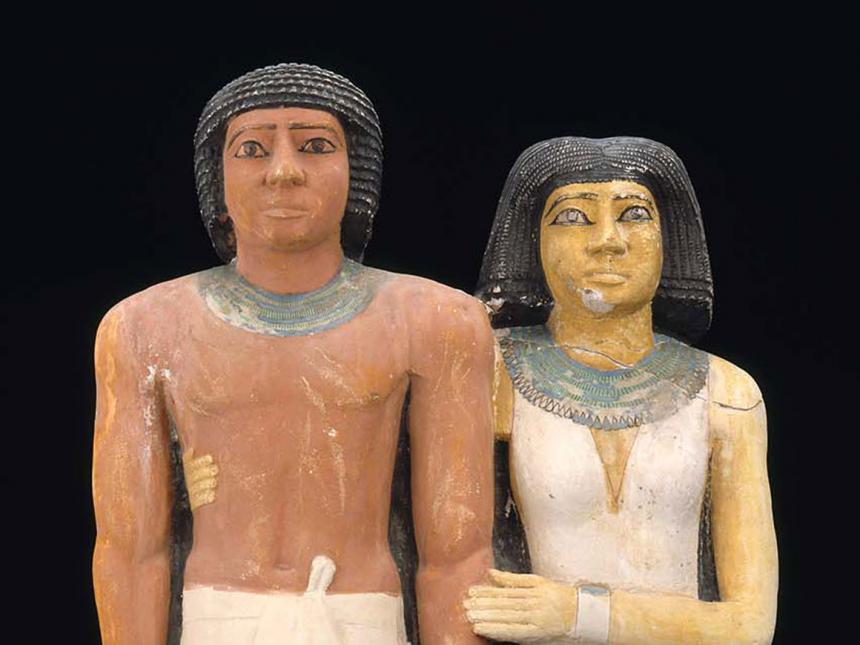
The pair statue is identified by a black-painted inscription on the base as Ptahkhenuwy, Supervisor of Palace Retainers.
Private sculptures of the Old Kingdom often imitated royal statues in style and composition. In this piece, the poses, youthful body forms, and the wife’s affectionate embrace mirror the famous dyad of King Menkaure and his queen. Ptahkhenuwy stands in the traditional male stance, left leg forward, while his partner—whose name is now lost and is known only as “his wife whom he loved”—stands beside him with both feet together.
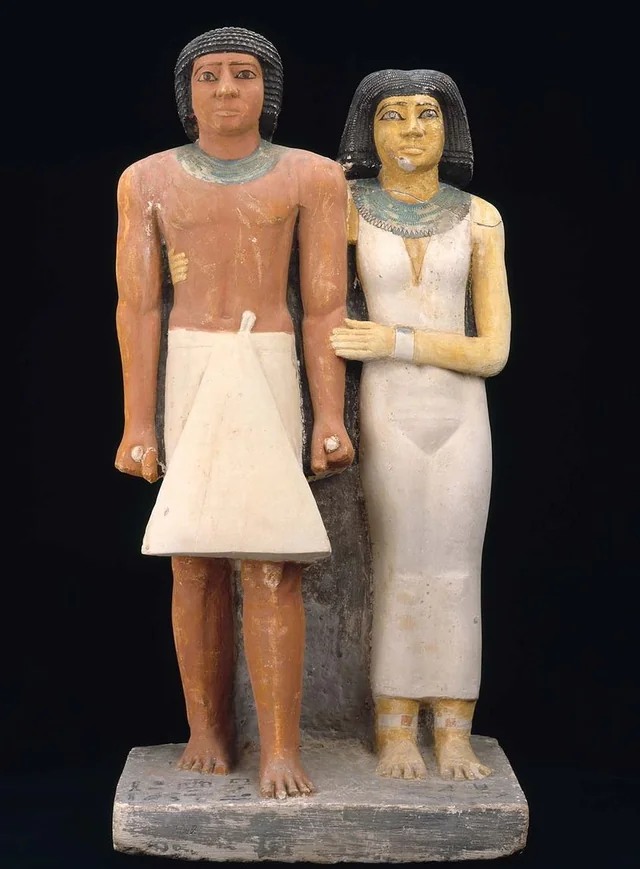
Although much ancient Egyptian sculpture was originally painted, the colors rarely survive. This statue is a fortunate exception. The husband’s skin is rendered in red ochre, the conventional hue for men whose outdoor work darkened their complexion. His wife’s skin is yellow ochre, representing the indoor life of women. Their faces share identical features—idealized rather than individual portraits—intended to convey eternal perfection. The negative space between the couple and the base is painted dark gray.
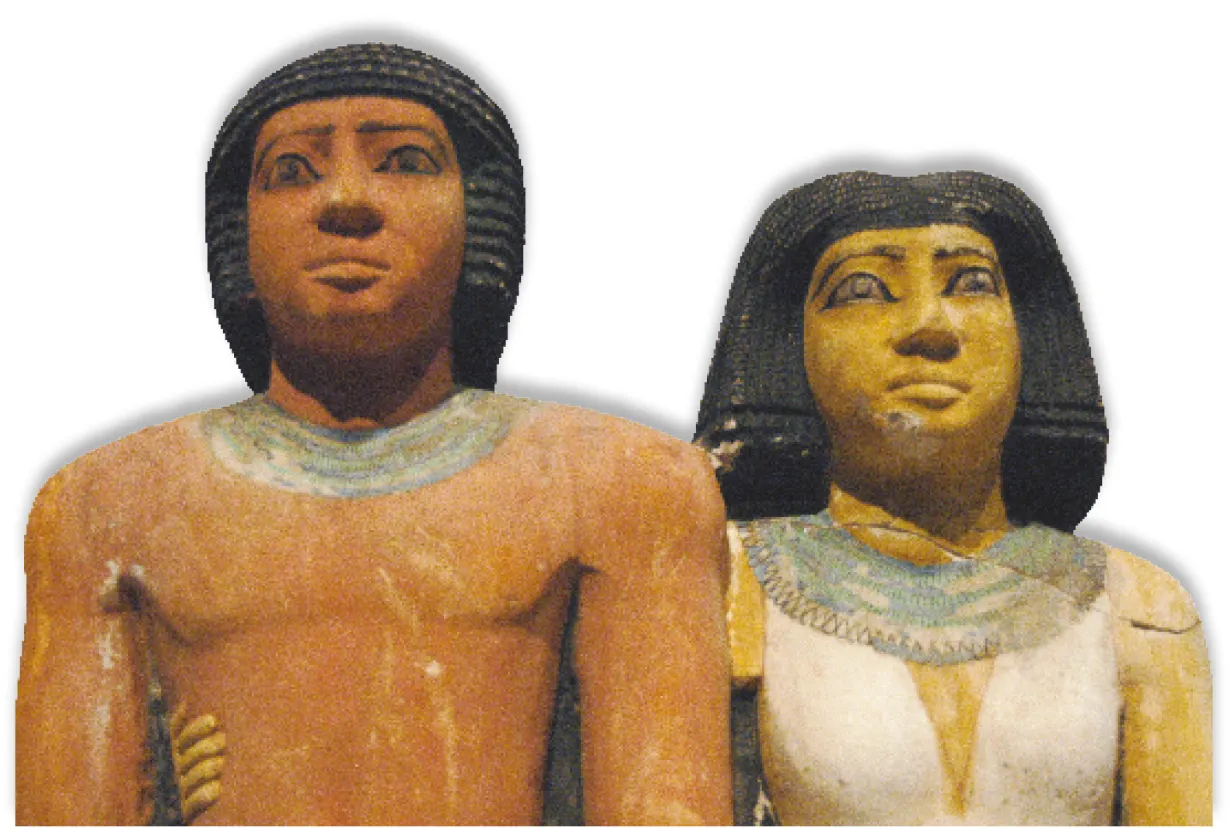
Both figures wear white garments, recalling the color of undyed linen. The wife’s V-neck sheath dress, typical of women in the Old Kingdom, fits so tightly that it outlines her entire figure—though in reality, such dresses were likely looser and more practical. The husband wears a knee-length wraparound kilt, the standard male attire of the time.
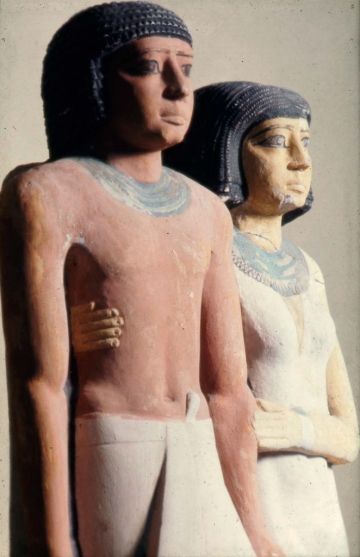
Colorful jewelry enhances the composition. Both wear broad collars painted to imitate semiprecious stones or faience. The wife also adorns herself with two anklets and a bracelet, forming a coordinated set reminiscent of actual jewelry discovered in Old Kingdom tombs. His black wig is arranged in neat rows of curls, while hers, also black and center-parted, falls to her shoulders, allowing glimpses of her natural hair beneath.
🕰 Old Kingdom, 5th Dynasty (ca. 2465–2323 B.C.)
🏺 From: Giza Necropolis, Tomb G 2004
🏛 Now housed in: Museum of Fine Arts, Boston
